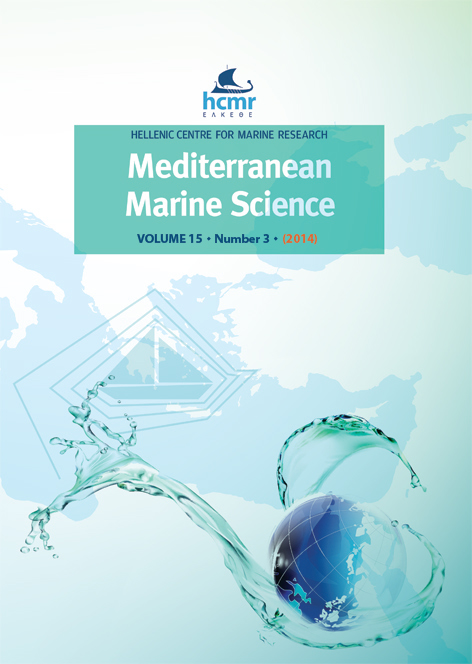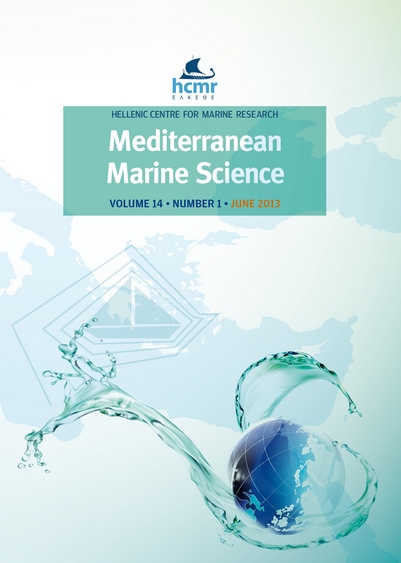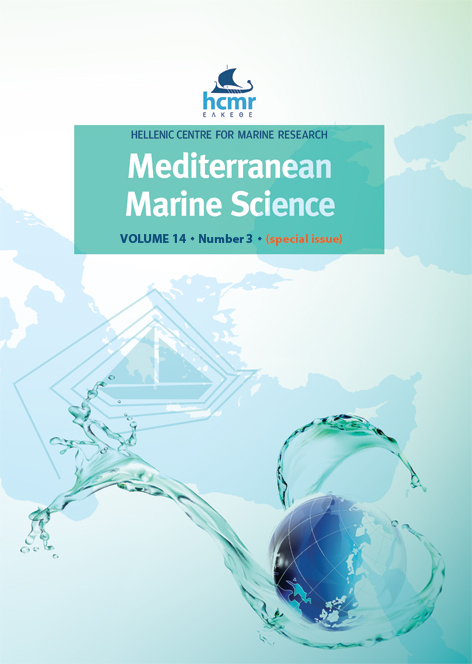Zooplankton variation in relation to hydrology in an enclosed hypoxic bay (Amvrakikos Gulf, Greece)

Abstract
This study investigated the temporal and spatial variation of the zooplankton community of a hypoxic coastal embayment (Amvrakikos Gulf, western Greece) in relation to hydrological characteristics during an annual cycle. The main hydrological feature was the prolonged water stratification, which determined hypoxic conditions in the deeper layers that became anoxic close to the bottom in September, while vertical mixing occurred for a very short period (October-November). The total zooplankton abundance fluctuated between 44.6 and 159.7 ind l-1. Fourteen groups were recorded, among which copepods dominated accounting on average for 86.4 %. Most of the groups presented higher abundance values in winter and spring when increased chlorophyll-α concentrations were found. Oxygen depletion affects the vertical distribution of most zooplankton groups and the vertical habitat partitioning between copepod orders and their ontogenetic stages. Several taxa were recorded even in the deep, anoxic layers, but only the polychaete larvae increased in abundance with depth. Calanoids, appendicularians and bivalve larvae presented eastward decrease of abundance in the deepest layers following the same pattern of oxygen decrease. Notwithstanding hypoxic conditions in its deepest layers, Amvrakikos Gulf was accounted for a mesotrophic ecosystem, with the nutrient concentration being lower than in the past. Several biotic elements indicate that the gulf is in a transitional phase towards a better quality state and these results reinforce the need for consistent monitoring of this ecosystem.
Article Details
- How to Cite
-
KEHAYIAS, G., & APOSPORIS, M. (2014). Zooplankton variation in relation to hydrology in an enclosed hypoxic bay (Amvrakikos Gulf, Greece). Mediterranean Marine Science, 15(3), 554–568. https://doi.org/10.12681/mms.695
- Issue
- Vol 15, No 3 (2014)
- Section
- Short Communication
Authors who publish with this journal agree to the following terms:
- Authors retain copyright and grant the journal right of first publication with the work simultaneously licensed under a Creative Commons Attribution Non-Commercial License that allows others to share the work with an acknowledgement of the work's authorship and initial publication in this journal.
- Authors are able to enter into separate, additional contractual arrangements for the non-exclusive distribution of the journal's published version of the work (e.g. post it to an institutional repository or publish it in a book), with an acknowledgement of its initial publication in this journal.
- Authors are permitted and encouraged to post their work online (preferably in institutional repositories or on their website) prior to and during the submission process, as it can lead to productive exchanges, as well as earlier and greater citation of published work (See The Effect of Open Access).







